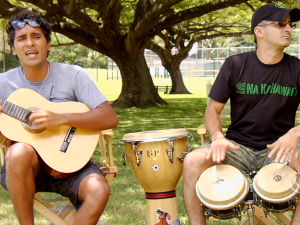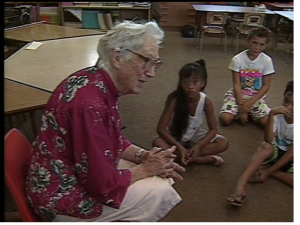Going to sea for me has always been a difficult thing to do. Since the first time I went on a “long trip” in 1999 I knew that I could physically and mentally handle the time at sea but only through working really really hard at it. That push to sail was always driven by something that I wanted to do that was culturally driven. Sailing canoes is the way that I plug into and practice my culture. The last two weeks I have been constantly comparing the experience of sailing a 62′ sailing canoe to what we are doing this month; motoring to the Northwest Hawaiian Islands on a 220′ NOAA ship. While there are inherent dangers of going to sea on any vessel, sailing on the Hiʻialakai is a little more luxurious than we are used to. On Hōkūleʻa, every bag is weighed, every piece of equipment has to be considered against how much space it will take up, and personal space is at a premium. Also on Hōkūleʻa everyone works at keeping course and sailing the canoe. While I am a photographer by trade, sailing canoes is a part of my life and while I’m on board, the canoe always comes first. Everything can get wet while you are on the canoe at anytime. It would be a major achievement to just write this blog on Hōkūleʻa. But all of the things I just mentioned ARE the reasons why I enjoy sailing canoes, because if it were easy everyone would do it. What we do on Hōkūleʻa is in many ways how it was done many centuries ago. The ability to experience some of the feelings and conditions that my ancestors might have seen or felt is something that I am very proud of and want to continue to do as long as I am able.
Being on the Hiʻialakai is a totally different experience. Randy Kosaki, the chief scientist for this cruise said a couple weeks ago to bring whatever stuff we needed to bring. “no shame” he said. Well three truckloads of gear, 8 cameras, a dolly, 4 tripod heads, and about 8 terabytes of storage later I finally figured out how to leave my shame behind and bring all the gear we need. So different from sailing canoes… Right now I’m sitting in a climate controlled “dry lab.” There are more than 14 work stations in here. We can staff it 24 hours a day. It even has clean power and battery backups for our drives and computers. There are crew of more than 20 that keep the ship running. All I’m expected to do is not get sick or fall overboard and take nice pictures. I’m going to work diligently at all three. Our stateroom sleeps 4 but only currently occupies the photography team, Scott Kanda, Justyn Ah Chong and Myself. The fourth bed is reserved for the water bottles for the HPU scientists collecting water for some ocean acidification research (more on that later).
We have hot showers and ice cold water. We are also strategically placed right next to the ships store that sells all kinds of snacks and other goodies that are necessary to have when at sea. All that to say that we’re in pretty good quarters with some great people who are all intent on making this trip safe and successful.
So what are we doing out here exactly? And why go? 10 years ago I was fortunate to land myself a spot as a photographer on a research trip to the Northwestern Hawaiian Islands. Since that initial trip as well as a couple more on board a canoe, I have been wanting to come back with a little more gear with a little bigger team. Going back now provides me with a different perspective from which to look at this place and it occurs to me that this journey is more like sailing a canoe than ever before. Tomorrow we will be at Nihoa, the jagged tooth, 150 acres sticking out of the sea alone for about a hundred miles in any direction. We’ll use modern equipment to get there but once on island its a lot like it must have been for centuries. Our kupuna traveled up here leaving the comfort and security of the main Hawaiians for something very important. I think its equally important for us to do so as well to better understand our kuleana back at home. Follow us on www.oiw.tv and our hashtag #nwhi2012 on Twitter and Instagram for the images and video on this amazing journey….
Na’u me ka ha’aha’a
Nāʻālehu Anthony
On board NOAA ship Hiʻialakai
[imagebrowser id=15]



